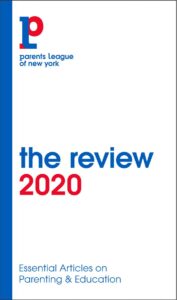Unlocking Children’s Math Potential

There is a huge elephant standing in most math classrooms: it is the idea that only some students can do well in math. Students believe it, parents believe it and teachers believe it. The myth that math is a gift that some students have and some do not is one of the most damaging ideas that pervades education in the United States and that stands in the way of students’ math achievement.
This short paper summarizes five recent and important areas of knowledge that have emerged from studies of the brain and learning and that address this myth head-on.
In the last few years scientists’ understanding of ability and learning have changed dramatically. The advent of brain scans and other technological advances have enabled researchers to gain new and important information about learning and ability. The results that are emerging have major importance for all those running schools, teaching mathematics or helping others learn mathematics.
1. All Students Can Achieve at High Levels.
The following two studies are amongst the most important in demonstrating the plasticity of the brain:
(1) Taxi drivers in London have to take a course that can take two to four years to complete to become qualified to drive a “black cab” anywhere in central London. The drivers learn routes involving 20,000 streets and 25,000 landmarks in the Greater London area. Scientists now know that the brains of the drivers grow during their training period. At the end of their training period the drivers’ hippocampus, the area of the brain that specializes in acquiring and using complex spatial information, is significantly larger. Scientists also found that when the cab drivers retired from driving their hippocampus shrank back to its original size (Maguire et al., 2000).
(2) Researchers at Stanford University brought 7- to 9-year-old children to their neuroscience lab. Half had been diagnosed as having mathematics learning disabilities, half were regular performers. Brain scans showed differences when they worked on mathematics—the “learning disabled” students had more of their brains lighting up when they worked on mathematics problems. The researchers gave eight weeks of one-on-one tutoring to both groups of students and at the end of that time, not only did both groups have the same achievement, but the exact same brain functioning (Luculano et al., 2015).
These and other studies show that students’ brains can adapt and grow in a short space of time, and that ideas that some students are not capable of learning high-level content should be rejected. Many people think that some students are not “ready” for algebra. But if the structure of people’s brains can change in response to an eight-week program, imagine what can be done in a year of a math class.
Education practice in the West has, for hundreds of years, been based on ideas of student “ability.” Schools across the United States group by ability and students are routinely referred to and thought of as high, medium or low ability. This practice continues despite decades of research studies showing that students achieve at higher levels in heterogeneous classes (Boaler, 2016), and when schools detrack, achievement goes up for students of all achievement levels (Burris et al., 2006).
Researchers now understand that, with good teaching and the right messages, every child can achieve at the highest levels in math at school. The pervasive idea that some students are “smart” and achieve at higher levels than others because of genetic ability is mistaken. Studies of expert performance show that it comes not from genetics but from hard work and deliberate practice (Ericsson & Pool, 2016).
Of course we all know students who are faster than others or who seem to grasp mathematics easily. That is because they have had multiple opportunities to make brain connections during their childhood. Students who struggle do not have less potential; they have not had the opportunities that other students have received. This makes it even more important that lower-achieving students are given the opportunities and encouragement in school that will enable them to progress to high mathematics levels. This does not mean being placed into low-level classes and being given low-level work. It means being given challenging work as well as growth mindset messages and opportunities to engage well.
2. Students’ Ideas About Their Ability Determine Their Learning Pathways and Math Achievement.
In 2006 Carol Dweck published a book summarizing decades of research on “mindset” that quickly became a New York Times best-seller (Dweck, 2006). The book has had more impact on educational practice than any other research volume I know. Through her research Dweck has shown that everyone has a mindset—an idea about ability and potential—and that some people have a “growth mindset” whereas some have a “fixed mindset.” Those with a growth mindset believe that smartness increases with hard work and that everything they learn makes them smarter; those with a fixed mindset believe that some people are smart and some are not.
These different mindsets have associated behaviors that we now know have a huge impact on learning and achievement (Blackwell et al., 2007). Students with a growth mindset persist longer on problems, relish challenge and learn from mistakes whereas those with a fixed mindset give up easily, avoid challenging problems and hate to make mistakes. When students have a growth mindset they achieve at higher levels and when students receive a mindset intervention their learning trajectories immediately accelerate upward towards higher and higher achievement (Blackwell et al., 2007).

Mindset also has significant implications for equity:
- High-achieving girls are some of the worst hit by fixed mindset thinking, which leads to avoidance of challenging work and high-level courses, (Dweck, 2006b);
- Gender differences in schools are only found among fixed mindset students (Dweck, 2006b); and
- Mindset interventions improve the performance of minority students more than any other students (Cohen et al., 2006).
In the United States people are more likely to have a fixed mindset about mathematics than any other subject or area of their lives, and the prevalence of fixed mindset thinking is one of the reasons we have widespread failure and math trauma in this country. It is critically important that teachers and students develop growth mindsets; these can be developed at any time in life.
When I asked over 800 teacher leaders in the United States recently which educational practices they saw as developing and maintaining fixed mindset ideas in students, the number one response was ability grouping. I agree: The easiest way to give a strong fixed mindset message to students is to put them into groups and tell them they have a certain ability. A recent study found that significantly more students developed growth mindsets after they were placed into high track groups (Romero, 2013). Students who develop fixed mindsets will often do anything they can to maintain the idea that they are “smart,” which can make them vulnerable to unproductive learning behaviors and the avoidance of challenging work or higher-level math courses.
It is extremely important that schools communicate growth mindset messages to students, and don’t limit students’ achievement by giving fixed mindset messages through grouping and other practices. This is important for equity, it is important for students of all levels, and it may be the key to unlocking the potential of millions of students in mathematics.
3. Mistakes and Struggle are Extremely Important for Learning.
Educators have long known that students who experience “cognitive conflict” learn deeply, and that struggling with a new idea or concept is very productive for learning (Piaget, 1970). But recent research on the brain has produced what I believe to be a stunning new result. Moser and colleagues (2007) showed that when people make mistakes, brain activity happens that does not happen when students get work correct. For people with a growth mindset the act of making a mistake results in particularly significant brain growth.
This and other research has shown that we want students to be struggling, as times of challenge are the most important times for brains.
I have argued elsewhere (Boaler, 2016) that students in math classrooms in the United States often believe that their role is to perform, showing they know math and can answer questions correctly, rather than to learn. It is very hard to be in a math class in which you are constantly working on short, closed tasks that you get right or wrong and still maintain a growth mindset.
When we open math tasks we encourage the opportunity for students to see math as a learning subject. Tasks that are narrow and closed encourage students to believe that math is a performance subject—that is, they are in math class to show what they know. Many students think that they come to math class to answer questions correctly, not to learn. This was brought home to me recently when a colleague, Rachel Lambert, told me that her 6-year-old son had come home and said he hadn’t enjoyed his math class. When she asked why, he said, “Math is too much answer time and not enough learning time.”
If we are serious about encouraging students to develop growth mindsets we need to provide open tasks that have the space within them for learning, not short tasks that students are meant to get right or wrong. Tasks are made more open when they have or encourage:
- Multiple entry points
- Multiple ways of seeing
- Multiple pathways and strategies for solutions
Many of these tasks are shown on the math education resource, youcubed.org. The research on the importance of mindset and struggle suggests strongly that we need math environments in which students are given open tasks and challenging work that causes them to struggle and experience important brain growth. Teachers should support or even reward students for making mistakes so that they feel comfortable doing so. More advice is given on ways to teach math for a growth mindset in my online classes, in the materials on youcubed.org and in Boaler (2016).

4. Mathematics Should Be Dissociated from Speed.
An important message that is emerging from neuroscience concerns the damage that is caused when math performance is associated with speed. Many math classes across the United States encourage the idea that the best math students are those who work quickly. When the late mathematician and Fields Medal winner Laurent Schwartz reflected on his childhood, he described his days in school as days when he thought of himself as unintelligent because he was a slow math thinker:
I was always deeply uncertain about my own intellectual capacity; I thought I was unintelligent. And it is true that I was, and still am, rather slow. I need time to seize things because I always need to understand them fully. … Towards the end of the eleventh grade, I secretly thought of myself as stupid. I worried about this for a long time. … [I]’m still just as slow. …
At the end of the eleventh grade, I took the measure of the situation, and came to the conclusion that rapidity doesn’t have a precise relation to intelligence. What is important is to deeply understand things and their relations to each other. This is where intelligence lies. The fact of being quick or slow isn’t really relevant. (from Schwartz, 2001)
Unfortunately many students across the United States come to believe that fast students are those who have the most potential, meaning that many slower but deep thinkers are turned away from math. I work with many mathematicians who are some of the slowest math thinkers I know. This is because they think deeply about math and don’t want to skim over ideas. The hallmark of high-level mathematical thinking, as Schwartz reflected, is working in depth, not working at speed.
A common educational practice in the United States is the requirement that young children take timed tests. These have now been shown to cause the early onset of math anxiety in a large proportion of students (Boaler, 2015).
Sian Beilock, now President of Barnard College, has conducted brain scans that show that math facts, such as those used in timed tests, are held in the working memory (Beilock, 2011). The more working memory individuals hold, the greater potential they have for academic success (Engle, 2002). Beilock and colleagues have found that when people are stressed, their working memory is impeded, and facts with which people are familiar cannot be recalled.
You may recognize this process, if you have been asked to calculate in a situation that is public or somewhere stressful for you and you experience the feeling of your mind freezing, so that you cannot calculate or recall math facts. This is the impact of stress blocking the working memory. When students who experience stress in timed conditions find they cannot access their working memory, they underachieve; this causes them to question their math ability and for many it is the onset of math anxiety.
There is no need to encourage speed in math classrooms. In addition to the stress caused by time pressure, it rarely encourages students to be fast. Instead the fast students stay fast and the slow stay slow, and those with math anxiety become slower. Timed tests as well as other speed-related materials such as flashcards cause slow, deep mathematical thinkers to be discouraged in classrooms (Golinkoff et al., 2004). It is important to present mathematics as a subject that requires depth of thought, not fast recall. More information on the damage caused by timed tests is given in Boaler (2015).

5. Teachers’ Messages are Hugely Powerful.
Students often develop ideas about their own potential from the subtle and not so subtle messages they receive in school and from teachers. The power of teachers’ words in shaping children’s potential was shown clearly in two recent studies.
(1) In one study (Yeager et al., 2013) researchers worked with high school students who were divided into two groups. All students wrote an English essay and received critical feedback on their essay from their teachers, but half of the students—and the teachers did not know who they were—received an extra sentence. The sentence was: “I am giving you this feedback because I believe in you.”
The students who received this sentence achieved at higher levels on school tests a year later. The sentence had a particularly significant effect for minority students. This was a stunning result—a single sentence resulted in long-term and significant achievement gains. I am cautious when sharing this result, as I don’t think it should be taken to suggest that teachers add this sentence to all student work. But teachers have many opportunities to communicate the message that they believe in and value students. The researchers note that the impact of the sentence came both from the feedback that teachers believed in their students, coupled with the provision of critical and helpful feedback that the students could learn from. The feedback told students that teachers believed in them and it gave them opportunities to learn and grow.
(2) Carol Dweck and Claudia Mueller conducted an experiment (Mueller & Dweck, 1998) that showed the power of teachers’ words, as well as how quickly the words can impact students. In one of their experiments they gave children a task to do. At the end of the task half of the students were praised for being “smart,” the others were praised for working hard. For their next task the children were given a choice between a task that was easy or difficult. Ninety percent of those who were praised for being smart chose the easy task, the majority of those praised for working hard chose the difficult task.
It is extremely important that neither parents nor teachers praise children in fixed ways, telling them they are “smart.” When children are told they are “smart” they often feel good, but later when they fail in some situation, and everyone does, they think “Hmm, I am not so smart.” Always praise what children have done, instead of the person: e.g., “It is wonderful that you have learned how to add numbers” not, “Wow, you can add numbers, you are so smart.” Further advice on ways to talk and praise students is given in the parent guidance on the youcubed website.
Discussion and Conclusion
Gloria Ladson-Billings refers to teachers as “dreamkeepers.” I like this description because it communicates, accurately in my view, the opportunities that teachers have to help students achieve their dreams. In mathematics this starts with believing that all students can achieve at the highest levels, as research on the brain shows. It also involves grouping structures that encourage high achievement for all and provision of challenging and interesting work for all students. If we can bring about these changes in mathematics teaching, many more students will enjoy mathematics, achieve at high levels, take more advanced mathematics classes and develop the quantitative literacy they need to become effective citizens in the 21st century.
Works Cited
Aronson, J. et al. (2002). Reducing the Effects of Stereotype Threat on African American College Students by Shaping Theories of Intelligence, Journal of Experimental Social Psychology, 38, 113-125.
Blackwell, L.S. et al. (2007). Implicit Theories of Intelligence Predict Achievement Across an Adolescent Transition: A Longitudinal Study and an Intervention, Child Development 78 (1), 246-263.
Beilock, S. (2011) Choke: What the Secrets of the Brain Reveal About Getting It Right When You Have To. New York: Free Press.
Boaler, J. (2009). What’s Math Got To Do With It? How Parents and Teachers Can Help Children Learn to Love Their Least Favorite Subject. New York: Penguin.
Boaler, J. (2013a). Ability and Mathematics: The Mindset Revolution that is Reshaping Education. FORUM, 55, 1 (143-152)
Boaler (2013b). Ability Grouping in Mathematics Classrooms. International Encyclopedia of Mathematics Education.
Boaler (2015). Fluency Without Fear. youcubed.org.
Boaler, J (2016). Mathematical Mindsets. Unleashing Students’ Potential through Creative Math, Inspiring Messages, and Innovative Teaching. Jossey-Bass.
Burris, C. et al. (2006). Accelerating Mathematics Achievement Using Heterogeneous Grouping. American Educational Research Journal, 43(1), 103-134.
Cohen, G. L. et al. (2006). Reducing the Racial Achievement Gap: A Social-Psychological Intervention. Science, New Series, 313(5791), 1307–1310.
Dweck, C.S. (2006a). Mindset: The New Psychology of Success. New York: Ballantine Books.
Dweck, C.S. (2006b). Is Math a Gift? Beliefs that Put Females at Risk, in Ceci, S.J. & Williams, W. (Eds.) (2007). Why Aren’t More Women in Science? Top Researchers Debate the Evidence. Washington, DC: American Psychological Association.
Engle, R. W. (2002). Working Memory Capacity as Executive Attention. Current Directions in Psychological Science, 11, 19-23.
Ericsson, A & Pool, R. (2016). Peak. Secrets from the New Science of Expertise. Houghton Mifflin Harcourt.
Hirsh-Pasek, K. et al. (2004). Einstein Never Used Flashcards: How Our Children Really Learn—And Why They Need to Play More and Memorize Less. Rodale, Inc.
Ladson-Billings, G. (2009). The Dreamkeepers: Successful Teachers of African American Children. Jossey-Bass.
Luculano, T. et al. (2015). Cognitive Tutoring Induces Widespread Neuroplasticity and Remediates Brain Function in Children with Mathematical Learning Disabilities. Nature Communications 6, 8453.
Maguire E.A. et al. (2000). Navigation-related Structural Change in the Hippocampi of Taxi Drivers. Proceedings of the National Academy of Sciences (US), 97, 4398-4403.
Moser, J.S. et al. (2011). Mind Your Errors: Evidence for a Neural Mechanism Linking Growth Mindset to Adaptive Post-error Adjustments. Psychological Science, 22 (12) 1484-1489.
Mueller, C. & Dweck, C. (1998). Praise for Intelligence Can Undermine Children’s Motivation and Performance. Journal of Personality and Social Psychology, 75(1), 33-52.
Piaget, J. (1970). Piaget’s Theory, in Mussen, P.H. (Ed.), Carmichael’s Manual of Child Psychology. New York: Wiley.
Romero, C. (2013). Coping with Challenges During Middle School: The Role of Implicit Theories of Emotion. (Doctoral dissertation). Stanford University, Stanford CA.
Schwartz, L. (2001). A Mathematician Grappling with His Century. Basel: Birkhäuser.
Yeager, D. S. et al. (2013). Breaking the Cycle of Mistrust: Wise Interventions to Provide Critical Feedback Across the Racial Divide. Journal of Experimental Psychology: General, 143(2), 804-824.
This article is adapted from an article that first appeared at youcubed.org, a math center co-founded by Dr. Boaler at the Stanford University Graduate School of Education.
Jo Boaler, Ph.D., is a Professor of Mathematics Education at Stanford University, and the co-founder and faculty director of its math education resource, youcubed.org. She is the author of several books, including Mathematical Mindsets.
This article first appeared in the 2019 issue of the Parents League Review. Get the current issue of the Review free with a family membership. Or purchase it separately.












